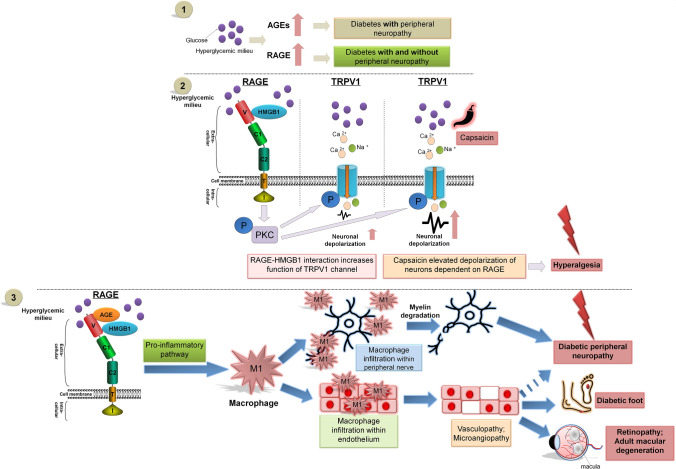Fig. 6.
RAGE and pathogenesis of peripheral nervous system diseases. Schematic of RAGE signal transduction and its role in the pathogenesis of peripheral nervous system diseases. (1) RAGE and AGE are both elevated in the hyperglycemic milieu. However, while RAGE is increased in both diabetics with and without peripheral neuropathy, a higher amount of AGEs is found only in diabetics with neuropathy. Hence, pathways that downregulate RAGE may be important in the pathogenesis of peripheral nervous system diseases. The extracellular domains of RAGE (V, C1, and C2) have the ability to bind ligands, i.e. AGEs, HMGB1 and others. RAGE-HMGB1 interaction triggers signal transduction via the PKC pathway. (2) RAGE-HMGB1 interplay may increase the activity of TRPV1 channels affecting neuronal depolarization in peripheral nerve, amplified by the presence of capsaicin modulation of pain perception in patients with diabetic peripheral neuropathy. (3) RAGE is connected to many pro-inflammatory pathways. Hence, RAGE signaling is important for macrophage infiltration within peripheral nerves and the endothelium of vessels. These phenomena may be crucial for the progression of diabetic peripheral neuropathy, diabetic foot, retinopathy, adult macular degeneration, and other peripheral nervous system diseases.

